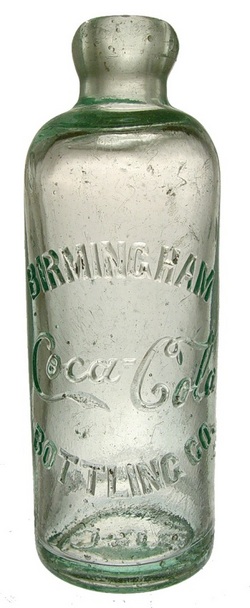Coca-Cola
Dr. John Stith Pemberton (1831 to 1888), an Atlanta pharmacist, invented Coca-Cola in 1886. A year earlier, he had introduced an alcoholic beverage called "Pemberton's French wine coca", but the temperance movement was then gathering momentum in the United States, prompting him to develop an alcohol-free product. Pemberton mixed a combination of lime, cinnamon, coca leaves, and kola nuts to make the famous beverage. When Coca-Cola was first introduced, the syrup was mixed with ice water. One day Pemberton's assistant, Venable, accidentally mixed the syrup with carbonated water instead. The combination was so refreshing that they decided to sell it that way as a fountain drink.A nineteenth-century soda fountain was a chemical reactor that generated its own carbonated water right in the drugstore. Carbon dioxide gas was formed inside a lead-lined chamber by the reaction between marble chips and sulfuric acid. The gas then dissolved in water inside the fountain. When a spigot was opened, carbonated water spurted out, propelled by gas pressure. Proprietors learned to operate the spigot with a dramatic flair, leading to the expression "soda jerker.' Earlier in the nineteenth century, carbonated water used to contain some sodium bicarbonate (baking soda). By 1880 it no longer did, but the term "soda" has persisted into the 21st century as a synonym for soft drinks.
Another pharmacist, Asa Griggs Candler (1851 to 1929) bought Pemberton's secret recipe in 1887. Candler, a marketing genius, devoted an unprecedented $50,000 a year to advertising the beverage.

An early Coca-Cola advertising clock, part of Asa Candler's marketing campaign to promote the drink.. (p4A item # D9757411)
Coca-Cola was sold in bottles for the first time on March 12, 1894. Previously, the drink had been sold only by the glass. Bottling was an important part of Candler's promotional strategy, since a sealed container would allow customers to enjoy 'Coke' at home instead of only consuming it at the neighborhood pharmacy.

An early Coca-Cola bottle.. (p4A item # D9866869)
The first Coca-Cola bottle was designed by Joseph Biedenham and was manufactured in Vicksburg, Mississippi. It was a straight-sided cylindrical container with raised molded-in lettering. The classic fluted green bottle, known as the "contour bottle,' was designed in 1915 by a Swedish artist named Alexander Samuelson. Legend states that Samuelson wanted to pattern his bottle after one of Coke's ingredients, but the contour bottle looks nothing like either a kola nut or a coca leaf. Its shape does somewhat resemble a cacao pod, although there is no cocoa in Coca-Cola.
Industrial designer Raymond Loewy (1893 to 1986), whose claims to fame include the Lucky Strike cigarette package, a Sears Coldspot refrigerator, the blue / white paint scheme on Air Force One, and several locomotives for the Pennsylvania Railroad, is often credited with designing the Coke bottle. Loewy was not the original designer, but he did re-design the contour bottle in 1955. He made it sleeker, he created new package sizes, and he eliminated the raised "Coca-Cola" lettering that used to be molded into the glass. Thereafter, the logo was painted onto each bottle.
Soft drink bottles were substantially constructed of thick, heavy glass. They were designed to be washed and re-used thousands of times. Customers paid a deposit at the grocery store and returned the empties later for a refund. The deposit for a single-serving bottle was 2 cents, then 5 cents, and ultimately 10 cents when returnable bottles were finally discontinued in the early 1980s. Aluminum cans and polyester bottles weigh far less than the glass containers they replaced, an important consideration during times of soaring energy costs.
Beginning in the 1930s, Coca-Cola's winter advertising campaigns featured a fat bearded man in a red suit trimmed with white fur. Coca-Cola was not the first to depict Santa Claus that way, but it certainly helped to popularize that image of him. (Previously, Father Christmas had often worn brown clothing.) Santa liked to pause for a Coke break during his rounds, and of course he would play with the toys that he'd just delivered. Some of the most enduringly popular promotional images have featured Santa beside a Christmas tree, Coke bottle in hand, operating an electric train. More often than not, the train was lettered for the Santa Fe Railway. Coca-Cola has marketed a dizzying plethora of branded merchandise including picnic coolers, beach balls, clothing, beach towels, toy vehicles, and much more.
Further Recommended Reading
Warman's Coca Cola Collectibles: Identification & Price GuidePetretti's Coca-Cola Collectibles Price Guide: The Encyclopedia of Coca-Cola Collectibles
B.J. Summers' Guide to Coca-Cola: Identifications, Current Values, Circa Dates
Reference note by p4A.com Contributing Editor Joseph H. Lechner, Ph.D.